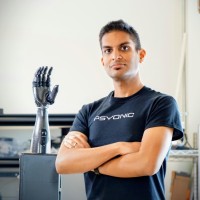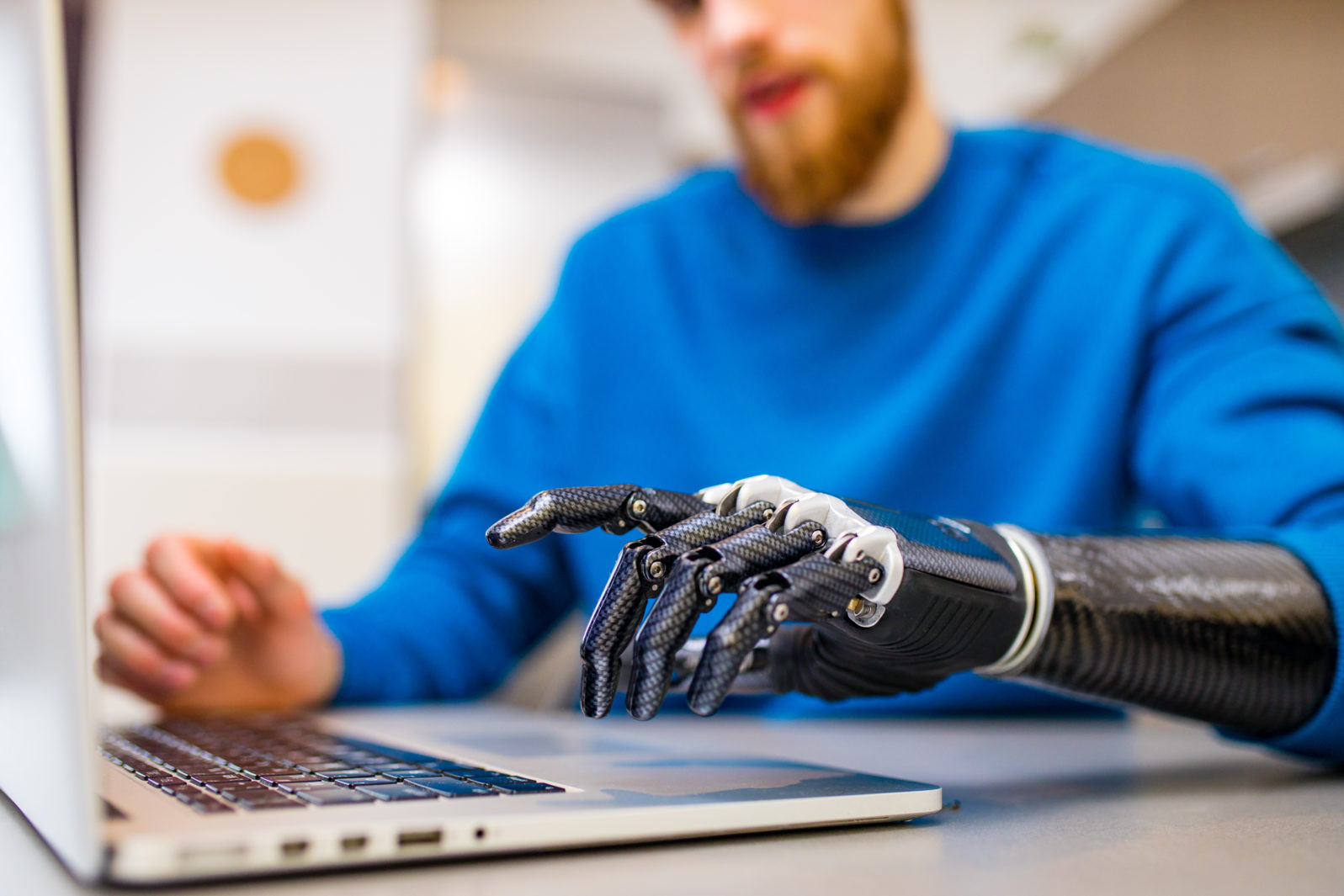The Bionic Man Was Science Fiction; the Bionic Hand Is Not
A recent internet-savvy bionic hand, developed by an American neuroscientist and computer engineer, is the most flexible yet, with sensory feedbackMany people associate bionics with a 70s sci-fi TV series, The Six Million Dollar Man (“After a severely injured test pilot is rebuilt with nuclear-powered bionic limbs and implants, he serves as an intelligence agent”). It’s not science fiction any more:
According to the Polsky Center for Entrepreneurship and Innovation at the University of Chicago, roughly 100,000 Americans — and 10 million people worldwide — are missing a hand.
The award-winning Ability hand shown in the video, made by Psyonic, a Champaign, Illinois-based startup, is a useful illustration of how far prosthetics has come via electronic and internet technology.
Representative of a new generation of prostheses, it is both electronics and internet-friendly: It charges in roughly an hour and the charge lasts through the day. It is Bluetooth-compatible for the purpose of downloading new software for fine-tuning the fingers’ grip and functionality. It can even charge a cell phone.

The face behind the Psyonic Ability hand is American neuroscientist and computer engineer Aadeel Akhtar, whose motivation is, in some part, personal:
The idea for PSYONIC started as early as when I was seven years old. That’s when I was visiting Pakistan, where my parents are from, and that’s first time I met someone or the limb difference. She was my age, she was missing her right leg and using a tree branch as a crutch. That’s what inspired me to want to go into this field.
Then we realized that we have similar problems back home in the US. When I was in grad school at the University of Illinois at Urbana-Champaign, I’d met a retired US Army sergeant who’s local to the area who lost his hand in Iraq in 2005 due to a roadside bomb, Sergeant Garrett Anderson. He uses a hook daily and so we wanted to upgrade him to the 21st century. We’ve been building the Ability Hand since. We’ve tested it out in Ecuador, we have a patient there that we’ve been working with. It’s been quite the journey.
Fourth Revolution Awards, “Psyonic Racks Up Accolades as its Bionic Hand Prepares for Nationwide Launch” at MHUB Chicago (December 2, 2020)
Elsewhere, Akhtar has shared, regarding the girl in Pakistan,
At the time, he wondered how they could share the same ethnic heritage but have such vastly different qualities of life. As he grew older, he realized that this was due to a lack of resources. For that reason, he founded and serves as the CEO of PSYONIC, a company whose mission is to develop advanced prostheses that are affordable for everyone.
His Ability hand can move all five fingers swiftly and provides sensory feedback (a sense of touch), which is a significant advance in utility. But, for high-tech prostheses to really improve most amputees’ lives, affordability is key:
In order to keep the cost down but improve durability, Psyonic opted to 3D print the molds but use low-cost rubbers and silicons to create the fingers and joints.
The result was a resilient hand at a low enough price point that Medicare would cover it, which was a priority. By getting the Ability Hand covered under Medicare, Psyonic expanded access to 75% of people with upper limb differences in the U.S., Akhtar said.
Alexia Elejalde-Ruiz, “Psyonic Racks Up Accolades as its Bionic Hand Prepares for Nationwide Launch” at Polsky Center (August 20, 2021)
It also requires a lot of commitment on the part of the patient. Akhtar talks about one patient, a former soldier in Ecuador who had lost his hand years earlier to machine gun fire:
The team outfitted the man with an early iteration of its prosthetic, a clunky device three times larger than a human hand, and retrained his brain to do basic tasks like pinch. The man, joyous, “felt as though he had come back,” Akhtar said.
“If we just stay in academia this just ends up in a journal paper,” Akhtar recalled thinking. “We want everyone to feel the way he did.”
Alexia Elejalde-Ruiz, “Psyonic Racks Up Accolades as its Bionic Hand Prepares for Nationwide Launch” at Polsky Center (August 20, 2021)
But costs must then come down even further and grants will doubtless be needed. As Elejalde-Ruiz notes at the Polsky Center writeup, “Eighty percent of limb amputations occur in developing countries, but only 3% of people there have access to affordable prostheses.”
It’s not just the device itself; surgeries are usually required to shape the stump and the user must work with a trained prosthetist over the long term to ensure that the device functions well on a day-to-day basis. These are challenges Akhtar and others look forward to trying to meet.
Note: Here are some other bionic hands and how they work. The general information site warns, of course, “bionic hands are impressive feats of engineering but they are much simpler than natural hands. In one respect, this hardly matters because they can still perform a wide variety of tasks, as demonstrated in this video. “However, do not expect them to match the dexterity of natural hands. A better way to assess a bionic hand is its usefulness, which is determined mostly by its user control system.”
You may also wish to read:
Prosthetic hand controlled by thoughts alone? It’s here. Decades ago, no one could control a prosthesis only by thought. There is lots of room for the field to grow still. (2020)
New mind-controlled robot arm needs no brain implant. The thought-controlled device could help people with movement disorders control devices without the costs and risks of surgery. (2019)
High tech can help the blind see and amputees feel. It’s not a miracle; the human nervous system can work with electronic information. (2019)
